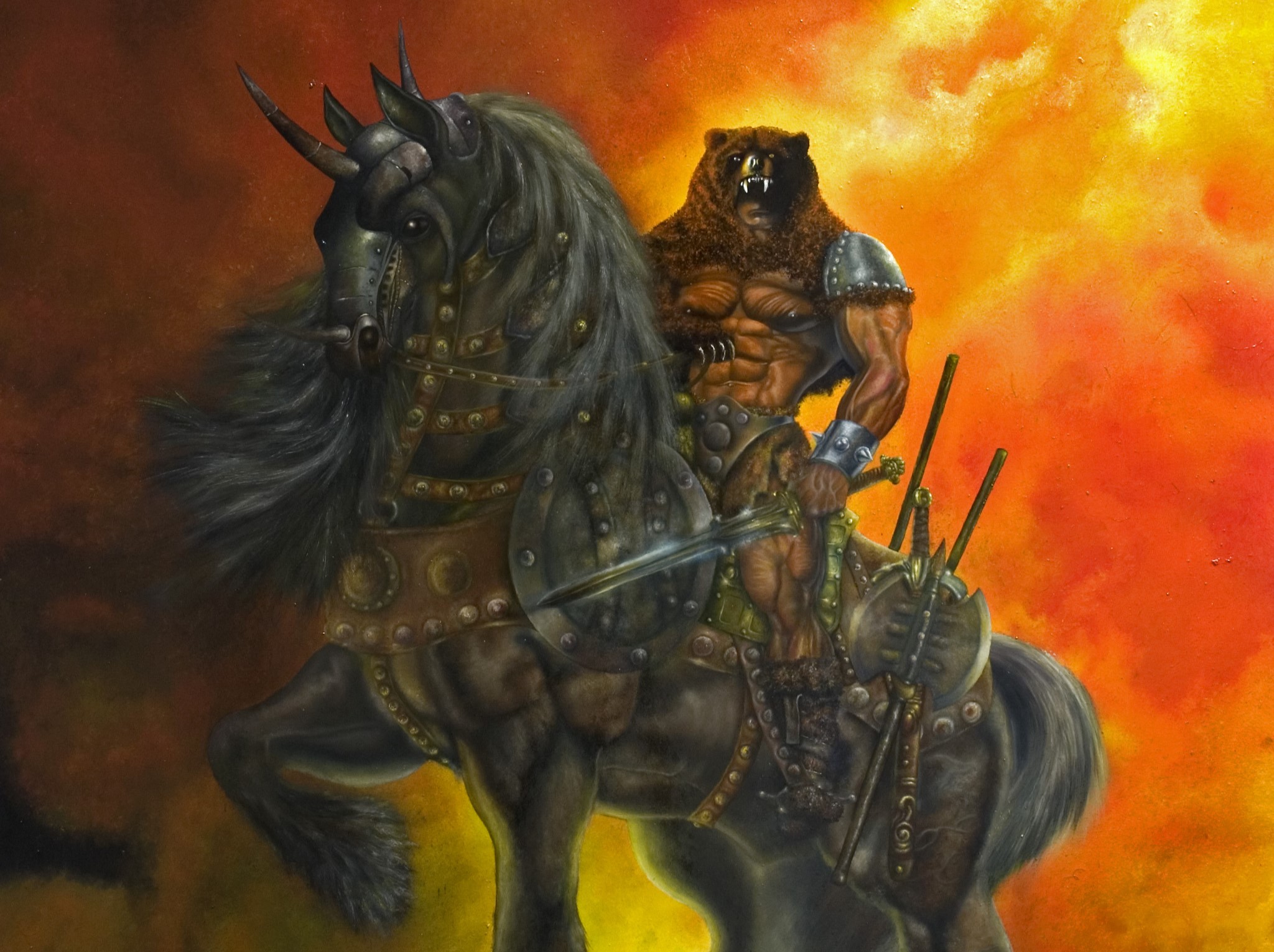Modern depiction of a Viking Beserker.
The Viking Berserkers were a group of warriors who have left a lasting impression on the world. They were known for their ferocious battle tactics and their unique warrior culture.
The term ‘Berserker’ is believed to come from the Old Norse noun ‘berserkir’, which likely means ‘bear-shirt’, indicating that these warriors wore coats made out of a bear’s skin. This interpretation suggests a close connection between the Berserkers and the bear, an animal known for its strength and ferocity. The word ‘berserk’ traces back to the Old Norse ‘berserkr’.
Berserkers in Battle
Berserkers were said to have fought in a trance-like fury, a characteristic which later gave rise to the modern English word ‘berserk’, meaning ‘furiously violent or out of control’. This battle frenzy, often associated with howling like wild beasts and gnawing the rims of their shields, made them formidable opponents on the battlefield.
In this frenzied state, Berserkers were known to exhibit behaviors akin to wild animals. They would emit sounds resembling the howls of beasts and bite the edges of their shields, further adding to their fearsome image. This animalistic display was not merely for intimidation; it was a testament to their ferocity and unyielding spirit on the battlefield.
Their ability to channel this raw, uncontrolled energy made them formidable opponents. Their opponents often found themselves overwhelmed by the Berserkers’ relentless aggression and seemingly superhuman strength. This unique battle strategy, coupled with their unwavering courage, cemented the Berserkers’ reputation as one of the most feared warrior groups in Viking history.
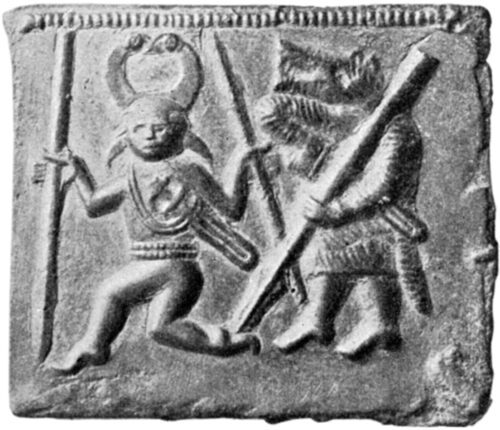
Berserkers and Animal Cults
Some authors propose that the Berserkers drew their power from the bear and were devoted to the bear cult, which was once widespread across the northern hemisphere. During their time, three primary animal cults were prevalent — the bear, the wolf, and the wild boar. Some scholars suggest that these cults may have had their roots in hunting magic. Berserkers were associated with mythological shapeshifters.
Despite their formidable prowess in battle, the Berserkers were known to uphold their religious practices. An instance from the Svarfdæla saga recounts a Berserker delaying a one-on-one combat challenge until three days post-Yule. They were devout followers of Odin, the Norse god of war and wisdom. This spiritual connection was thought to be a source of their courage and ferocity in battle.
Upon their death, Berserkers were traditionally draped in bearskins as part of their funeral customs. This bear-warrior symbolism continues to be seen today in the form of bearskin caps worn by Danish monarch’s guards.
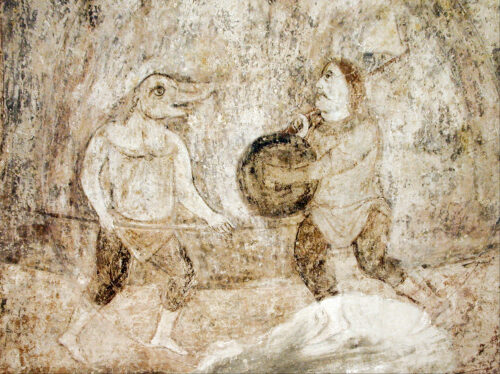
Weapons of the Beserkers
Swords were a common weapon among the Berserkers These were often passed down from father to son, signifying their importance and value. Axes were another weapon of choice for the Berserkers. They were cheaper than swords and thus more widely used. Spears were also used by the Berserkers. They were a cost-effective weapon, making them accessible to more Vikings.
The Berserkers were known to fight in a trance-like fury, often discarding their armor and fighting bare-chested. This lack of armor, combined with their ferocious style of combat, made them a formidable force on the battlefield. Their nakedness was not just a display of fearlessness, but also a psychological weapon that instilled fear in their enemies.
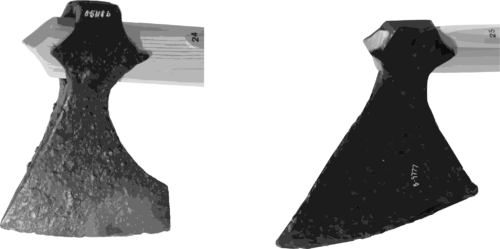
Berserkers and Hallucinogens
There are theories suggesting that Berserkers might have might have utilized a variety of mind-altering substances to induce this state. The substances, potentially derived from naturally occurring plants or fungi, could have had psychoactive properties that altered their perception and heightened their aggression during combat.
These theories suggest that the consumption of these substances could have facilitated the Berserkers’ transition into their characteristic battle frenzy, enhancing their fearlessness and physical prowess. This could explain their seemingly superhuman strength and resilience, as well as their disregard for personal safety on the battlefield.
It important to note that these theories are largely speculative. The historical evidence supporting the use of psychoactive substances by the Berserkers is limited and inconclusive. While it’s a fascinating concept that adds another layer of complexity to our understanding of the Berserkers, it remains a topic of ongoing research and debate among scholars.
Berserkers in History
Berserkers existed as mercenaries for hundreds of years during the Scandinavian Middle Ages, traveling in bands to fight wherever they could get paid. They guarded Norway’s King Harald I Fairhair and fought for other kings and royal causes.
By the 11th century, the Berserkers’ reputation had grown so fearsome that they were eventually outlawed. Their aggressive behavior and the threat they posed to societal order led to their prohibition. Despite their eventual downfall, the legacy of the Berserkers continues to captivate historians and enthusiasts alike, serving as a vivid reminder of a unique warrior culture that once thrived in the Viking Age.
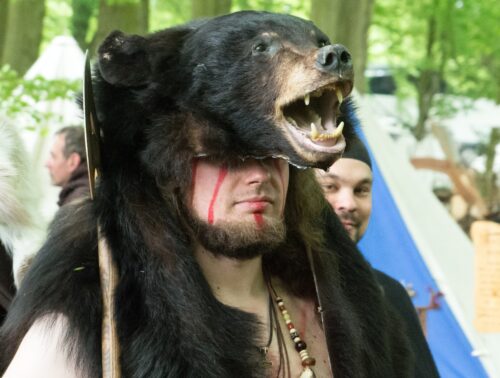
Final Thoughts
The legacy of the Berserkers continues to influence modern perceptions of the Viking Age and contributes to our understanding of early Scandinavian history. It is important to note that this article is based on historical interpretations and some aspects of the Berserkers remain a subject of ongoing scholarly debate.
*The views and opinions expressed on this website are solely those of the original authors and contributors. These views and opinions do not necessarily represent those of Spotter Up Magazine, the administrative staff, and/or any/all contributors to this site.
